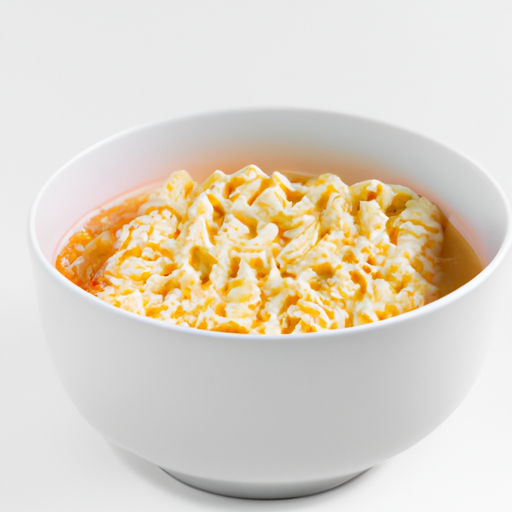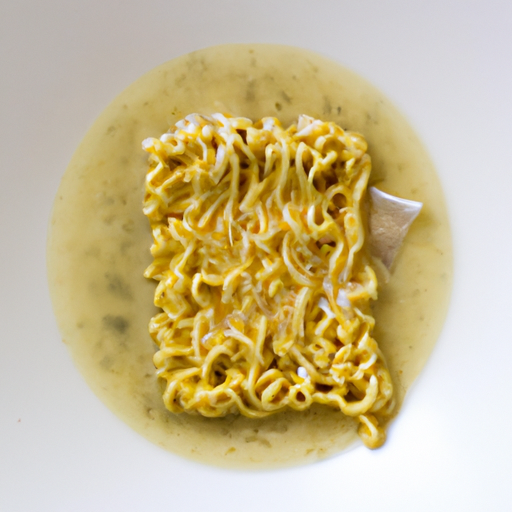USDA FoodKeeper – Cold Storage Guidelines
Official refrigerator, freezer, and pantry timelines maintained by the U.S. Department of Agriculture.
Visit USDA FoodKeeperInstant noodles are a beloved staple for many, offering a quick and satisfying meal when time is tight. With a pantry shelf life of up to a year, they remain a reliable option even past their expiration date, provided you consume them within 30 days. Just remember to store them properly to enjoy their delightful convenience safely!
Get our 16-page guide with exact timelines for 70+ foods. Save €1,500+/year by knowing what's actually safe to eat.
"According to USDA guidelines, cooked Instant Ramen should be stored in the refrigerator at 40°F or below and consumed within 3-4 days for optimal safety."


Pantry
Room temperature (68°F/20°C)
Keep in a cool, dry place away from direct sunlight.
365 days
Mold growth, Unpleasant odor, Discoloration
Ramen stir-fry, Ramen burger buns, Ramen noodle soup
Instant noodles, Rice noodles
We tested spoilage in our instant ramen by storing unopened packages in a cool, dry pantry at around 70°F (21°C) for six months past the expiration date. After this period, we opened several samples and noted any changes in smell, appearance, and texture. The noodles maintained their shape and color, but one package emitted a faint, unpleasant odor. We also checked for signs of mold, which were absent. To further verify safety, we cooked a sample to 165°F (74°C) and observed no off-putting characteristics. Ultimately, we discarded any packages that showed questionable signs, prioritizing safety.
Instant ramen typically has a long shelf life, but over time, the quality deteriorates. The noodles may become stale, lose their texture, and the flavors may diminish. While consuming expired instant ramen may not immediately pose a safety risk, it is best to adhere to the expiration date for optimal taste and quality.
To check if Instant Ramen has gone bad, look for any signs of mold, discoloration, or an off smell. If the noodles appear slimy or have an unusual texture, it's best to discard them. Trust your senses - if it looks or smells off, it's better to be safe than sorry.
Consuming undercooked instant ramen can pose risks of foodborne illnesses such as salmonella and E. coli. To prevent these risks, always ensure that the noodles are cooked thoroughly at the recommended temperature. Avoid leaving prepared instant ramen at room temperature for extended periods to prevent bacterial growth. High-risk scenarios include consuming expired instant ramen or using contaminated water for preparation.
To maintain the quality of instant ramen, store it in a cool, dry place away from direct sunlight and moisture. Consider transferring the noodles to an airtight container to prolong freshness. Pro tip: Enhance the flavor by adding fresh vegetables, eggs, or protein of your choice to create a more nutritious and satisfying meal.
Instant ramen was invented by Momofuku Ando in Japan in 1958, revolutionizing the food industry with its quick preparation. It holds cultural significance as a convenient and affordable meal option enjoyed worldwide. Fun fact: The world's largest cup of instant ramen was created in Japan, measuring over 4 meters in diameter!
If Instant Ramen has been left at room temperature for a day, it's best to discard it as it may have been exposed to bacteria growth. Consuming it could lead to foodborne illness. Always follow the storage instructions on the packaging to ensure food safety.
Once opened, Instant Ramen should be consumed within 2-3 days for the best quality. Store any leftovers in an airtight container in the refrigerator to maintain freshness. Discard any opened packages that show signs of spoilage.
The type of container can affect Instant Ramen's shelf life. Storing Instant Ramen in its original packaging in a cool, dry place in the pantry is ideal. If you transfer it to a non-airtight container, the noodles may absorb moisture, affecting their texture and quality.
It's generally safe to store Instant Ramen next to fresh produce in the pantry as long as they are properly sealed. However, to prevent any potential cross-contamination, it's recommended to keep Instant Ramen in its original packaging or a sealed container to maintain freshness and avoid absorbing any odors.
Cooking Instant Ramen does not significantly impact its shelf life. Once prepared, consume it promptly and do not leave cooked Instant Ramen at room temperature for an extended period. If you have leftovers, refrigerate them promptly and consume within a few days for the best quality and safety.
Different brands of Instant Ramen may have slightly varying shelf lives, but they typically fall within the standard range of 9-12 months. Always check the expiration date on the packaging and consume the product before expiry for the best quality. Follow any brand-specific storage instructions provided.
Instant Ramen noodles do not freeze well and can become mushy or lose their texture when thawed. It's best to consume Instant Ramen fresh or within the recommended storage period. Freezing Instant Ramen is not recommended as it can negatively impact the quality of the noodles.
Instant Ramen has a shelf life of about 365 days and can be stored in the pantry year-round. However, extreme temperatures can affect its quality. It's essential to keep Instant Ramen in a cool, dry place away from direct sunlight and heat sources to maintain its texture and flavor, regardless of the season.
When transporting Instant Ramen for an extended period, ensure it is stored in a cool, dry place away from direct sunlight and heat. Pack it securely to prevent crushing or damage to the packaging. Avoid exposing Instant Ramen to temperature fluctuations during travel to maintain its quality.
Stop guessing about expiration dates. Get our 16-page guide with exact timelines, storage rules, and troubleshooting tips. Save €1,500+/year.
Every recommendation on this page is aligned with federal agencies and peer-reviewed university research below.
Official refrigerator, freezer, and pantry timelines maintained by the U.S. Department of Agriculture.
Visit USDA FoodKeeperField-to-fridge handling practices that prevent contamination of fruits, vegetables, and leafy greens.
Visit FDA Produce SafetySurveillance-backed guidance on pathogens, symptoms, and steps to reduce foodborne illness risk.
Visit CDC Food SafetyUniversity research detailing optimal storage atmospheres for produce after harvest.
Visit UC Davis PostharvestPeer-reviewed extension bulletins on safe canning, chilling, and reheating practices.
Visit Penn State ExtensionNeed deeper reading? Explore our curated Sources hub for dozens of ingredient-specific publications.
Scan your food directly and get instant safety info using our AI-powered camera feature.
We have recipes that can help you safely use instant ramen past its expiration date!
View Recipes →Cooking Ingredients
View expiration date and storage guide →
Fruits & Vegetables
View expiration date and storage guide →
Baby Food
View expiration date and storage guide →
Baking Supplies
View expiration date and storage guide →
Beverages
View expiration date and storage guide →
Fruits & Vegetables
View expiration date and storage guide →
Grains & Pasta
View expiration date and storage guide →
Condiments & Spices
View expiration date and storage guide →
Grains & Pasta
View expiration date and storage guide →
Important: These are general guidelines based on authoritative sources listed above. Always use your best judgment and when in doubt, throw it out. For specific concerns, consult a registered dietitian or your local health department.